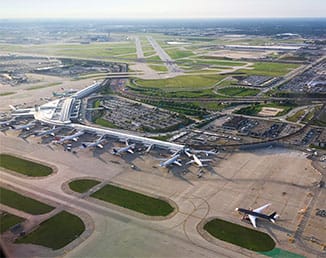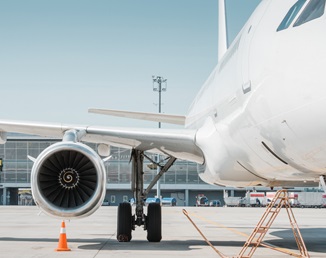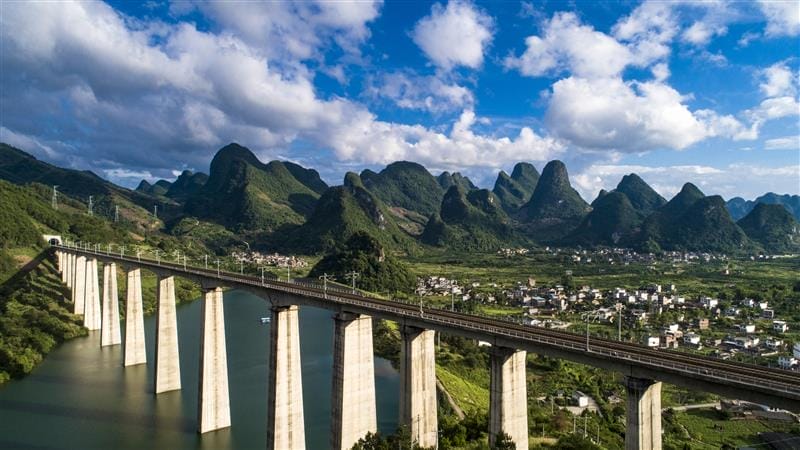
Cirium Ascend Consultancy is trusted by clients across the aviation industry to provide accurate, timely, and insightful aircraft appraisals. The team provides the valuations and analysis the industry relies on to understand the market outlook, evaluate risks and identify opportunities.
Discover the team’s industry reports & market commentaries. Read their latest expert analysis, viewpoints and updates on Thought Cloud.

Scott Zhao, Principal Aviation Analyst, Cirium Ascend Consultancy
China’s transportation landscape has undergone a quiet but profound transformation, one that is redefining how people move across the country and recalibrating the roles of air and rail in the national mobility ecosystem. At the heart of this shift is the rapid rise of high-speed rail (HSR), which has not only captured market share from short-haul aviation but has fundamentally altered traveller behaviour, airline network strategies, and urban connectivity.
With a series of strategic milestones, from the 2007 railway speed-up, when several existing lines were upgraded to support operations at speeds of up to 250 km/h, to the 2017 launch of the 350 km/h “Fuxing” trains, China has built one of the world’s most advanced HSR network, one that now outperforms air travel on many regional routes.
For urban travellers in China, the total time from home departure to passing security at the terminal is a critical factor in mode choice. Despite the speed of air travel, the full door-to-security journey often favours high-speed rail, especially for trips under 800 km. This analysis compares average total travel times from a typical urban centre residence to completing security at major airports versus high-speed rail stations across China’s first-, second-, and third-tier cities. This advantage is evident across city tiers.
Average total time – home door to security clearance:
| City tier | Airport (door to security) | HSR station (door to security) | Time saved by HSR |
| First-tier (e.g., Beijing, Shanghai) | 120 min | 75 min | 45 min |
| Second-tier (e.g., Chengdu, Hangzhou) | 105 min | 65 min | 40 min |
| Third-tier (e.g., Nanchang, Luoyang) | 85 min | 50 min | 35 min |
Note: averages based on typical urban residential areas, non-peak traffic, and standard security wait times
The time savings stem from three key factors: HSR stations are typically 10–15 km from city centres, compared to 25–40 km for airports; access is faster and less prone to congestion; and security screening is more efficient, with shorter queues and less stringent protocols.
Time breakdown by component (typical first-tier city):
| Step | Airport | HSR station |
| Home preparation & departure | 15 min | 10 min |
| Distance to terminal | 25–30 km | 10–15 km |
| Travel time (car/taxi) | 55 min | 30 min |
| Parking / entry / walk-in | 15 min | 10 min |
| Security screening & queue | 35 min | 18 min |
| Total | ~120 min | ~75 min |
Data source: urban mobility surveys, traffic analytics (2023–2024), and operational benchmarks from major Chinese transport hubs
These advantages explain HSR’s dominance for trips under 800 km, where it offers faster, more reliable, and more convenient service than air, even when flight time is shorter.
The impact on aviation is clear. As HSR expanded, short-haul flights began to decline in relative importance. The data from Cirium SRS Analyser illustrates a structural shift in domestic air travel patterns:
| Count of total flights | Avg. distance km | Flight count (≤800 km) | Flights ≤800 km (as a % of total) | Avg. distance (≤800 km flights) | |
| 2011 Q1 | 395681 | 1477 | 104549 | 26.4% | 550 |
| 2013 Q1 | 469721 | 1539 | 118363 | 25.2% | 561 |
| 2015 Q1 | 562112 | 1563 | 130359 | 23.2% | 556 |
| 2017 Q1 | 689640 | 1537 | 152022 | 22.0% | 549 |
| 2019 Q1 | 828744 | 1514 | 175442 | 21.2% | 557 |
| 2024 Q1 | 967186 | 1605 | 157819 | 16.3% | 583 |
| 2025 Q1 | 960944 | 1610 | 152675 | 15.9% | 581 |
Data source: Cirium SRS Analyser, all figures refer to scheduled flights only
While total flight volume has more than doubled since 2011, growth has plateaued in recent years, with a slight dip observed in Q1 2025 suggesting market saturation. More significantly, the average flight distance has increased from 1,477 km to 1,610 km, while the share of short-haul flights (≤800 km) has declined sharply from 26.4% to 15.9%. This shift is not incidental; it reflects the growing impact of HSR on route-level demand. As high-speed rail has expanded and gained preference for sub-800 km journeys, airlines have responded by reallocating capacity toward medium- and long-haul segments, where air travel retains a competitive edge.
Rather than eliminating demand for air travel, HSR appears to be reshaping it. The above data suggests that airlines may be gradually shifting their focus away from saturated short-haul routes – particularly in regions where HSR provides strong competition – and toward longer domestic flights, international services, and markets where high-speed rail coverage remains limited. These may include parts of western China, smaller cities, or corridors requiring multi-stop connectivity. While further analysis is needed to confirm the extent of this realignment, the observed trends point to a broader strategic adaptation by airlines in response to evolving competitive dynamics.
The implications for fleet demand are therefore complex. While HSR appears to have suppressed growth in the short-haul segment, this does not necessarily equate to an overall reduction in aircraft needs. Instead, demand may be shifting toward aircraft better suited for longer distances. Cirium’s forecast of over 6,600 new single-aisle aircraft in the next 20 years is driven not just by fleet renewal, but by structural changes in route design and demand profiles, especially as more airlines prioritize efficiency and range in their future operations.
China’s evolving air network illustrates how modal competition can catalyse innovation and resilience. The rise of HSR has challenged airlines to redefine their role, moving from head-to-head competition to strategic differentiation. The future of mobility in China may not be rail versus air, but rail and air functioning in a more integrated ecosystem. HSR delivers strong regional and intercity access, while aviation continues to lead in long-haul and international connectivity. Together, these modes have the potential to support a more balanced, sustainable, and passenger-oriented transportation system.
For policymakers and industry leaders, a key takeaway is that high-speed rail need not be viewed solely as a competitor to aviation, but as a potential enabler of broader transport efficiency. By exploring multimodal integration through coordinated scheduling, ticketing, and infrastructure planning, China may be developing a model that reduces redundancy, enhances connectivity, and improves system resilience. Its evolving experience offers valuable insights for other countries planning or expanding high-speed rail networks.
It is important to note, however, that this analysis has limitations. The time comparisons in Tables 1 and 2 are based on generalized assumptions for typical urban travellers under non-peak conditions. Moreover, the 800-km threshold, though widely used in industry and media, should be interpreted as a flexible benchmark rather than a fixed cutoff. Future research could extend this analysis to routes in the 800–1,000 km range to better understand the full extent of modal overlap and passenger preference shifts as HSR networks continue to evolve.


























































